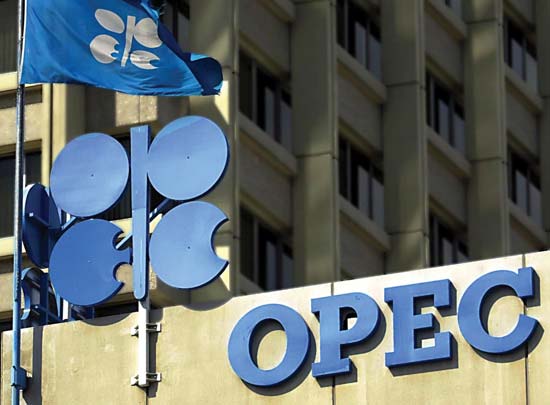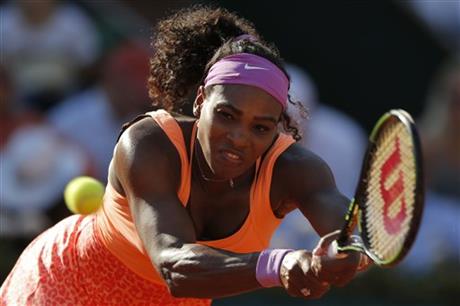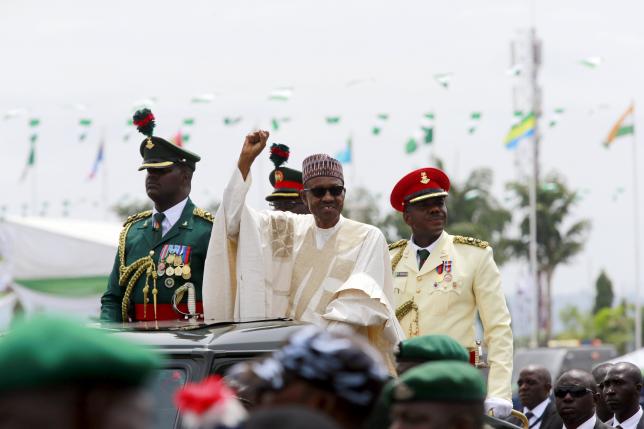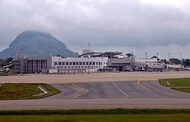OPEC on Friday said the cartel would keep its collective output level unchanged at 30 million barrels a day, the second time in six months it decided to take no action amid a global glut of crude and weak oil prices.
The decision amounted to an acknowledgment that the Organization of the Petroleum Exporting Countries’ role had fundamentally changed in the past year with a flood of American oil extracted from shale rock. No longer can the group—which pumps about one in three barrels of oil consumed each day—throttle back on output to support prices that have fallen from $114 a barrel to less than $63 today.
ENLARGE
“The reality now is that we cannot have this $100 (a barrel) anymore. This is a fact. We have less value for our barrels,” OPEC Secretary General Abdallah Salem el-Badri said at a news conference.
Friday’s decision affirms its decision last November to maintain output, and is essentially a signal for members to pump as much as they like. It could also set up another round of bruising market-share battles in the global oil market for the next few months. U.S. production has yet to fall off significantly, as some had expected it would by now amid the sharp fall in prices and a big reduction in drilling.
Most OPEC members are already pumping flat out. The group is already producing about 1 million more barrels than its official ceiling of 30 million barrels a day—a target Mr. el-Badri said was now “an indicator” rather than a quota.
Oil prices quickly reversed direction after delegates emerged from the meeting. Brent crude was recently trading up about 0.6% to $62.41 a barrel, while U.S. oil was up 0.4% at $58.27. Both benchmarks had been lower all morning in London amid speculation OPEC might actually raise its official ceiling—a move that would have signaled an even more aggressive approach to defending its market share.
OPEC is still grappling with an oil market that has changed dramatically in recent years as U.S. oil companies have driven a record production surge from domestic fields using unconventional drilling methods and global demand growth sputtered with economic slowdowns in China and Europe. The result was a glut of oil that has largely gone into stockpiles..
Prices are now seen as relatively stable, and OPEC delegates said they saw demand growing, with lower prices fueling consumer purchases of gas-guzzling automobiles and better economic data driving energy usage.
With the recent price recovery, OPEC members with the greatest ability to balance budgets and keep their economies afloat expressed satisfaction with the group’s decision to effectively allow members to pump as much oil as they can.
“We had a very amicable meeting,” said Saudi oil minister Ali al-Naimi.
MoneyBeat: OPEC Admits It Has to Live With Price Below $100 Barrel
The group’s strategy is being driven by Arab Gulf states, especially the world’s biggest exporter Saudi Arabia, which can draw on hundreds of billions of dollars in their coffers after a decade of elevated prices. For many OPEC members, however, Saudi Arabia’s decision to maximize its own production and compete for market share against all comers, outside and even within OPEC, has created massive financial and economic challenges.
OPEC members such as Venezuela, Nigeria, Algeria, Iran and others need oil prices to be much higher to keep government spending in balance and their economies from collapsing. Those countries’ push for a production cut last November was brushed off by Saudi Arabia, and they appear to have acquiesced to continuing the policy without much overt opposition this time around.
But the decision to keep pumping could test even Saudi Arabia’s staying power, ahead of the cartel’s next meeting on Dec. 4 in Vienna. Just as some OPEC members have pumped as much oil as possible in recent months, global oil production has remained resilient so far in the face of lower prices.
U.S. oil production, one of the biggest wild cards in OPEC’s strategy of going head-to-head with all comers, has yet to fall significantly from record levels despite aggressive cutbacks in drilling activity since prices went into a tailspin. And with prices rising back above $60 per barrel, the drilling cutbacks have slowed.
Market observers say U.S. production from shale deposits could decline in the coming months but then pick up again even at current oil price levels because U.S. producers are becoming more efficient and cost-effective.
At an OPEC-sponsored conference in the days before the meeting, Ryan Lance, the head of ConocoPhillips Corp., told OPEC delegates the U.S. shale industry had already reduced costs by up to 30% and expects to improve efficiently by up to 20% over the next five years.
“U.S. shale is here to stay,” he said.
At least some OPEC members acknowledge they didn’t respond early enough to shale, which was able to get a foothold largely because oil prices were over $100 a barrel for three years before the market collapsed.
“Maybe we were about two years late in really evaluating shale oil, and that’s why it came as a shock,” said Iraq oil minister Adel Abdul-Mahdi.
OPEC also began pondering what could be another shock to the oil market in the coming weeks: Iran’s plans to pour up to a million new barrels of oil on the global market in the event of a nuclear deal with the U.S., Europe, Russia and China.
Sanctions currently restrict Iran’s ability to sell oil, and have cut its exports to just over a million barrels a day. It remains unclear how much and how quickly Iran could ramp up production. Analysts expect Iran will produce less than it is promising, more in the range of 400,000 to 600,000.
Some of OPEC’s more vulnerable members are pressing OPEC, particularly Saudi Arabia, to trim production so that the surge of Iranian oil won’t send prices into another downward spiral.
But delegates said production quotas weren’t discussed at the meeting.
Mr. Naimi, the architect of the group’s new laissez-faire strategy, showed little enthusiasm in the run-up to Friday’s meeting for stepping back so Iran can pump more oil.
Tensions between the two countries have been high recently as Iran expands its influence in Iraq, Syria, Yemen and elsewhere, causing anxiety in a Saudi Arabia already deeply concerned about the Iranian’s potential nuclear deal.
The Wall Street Journal














